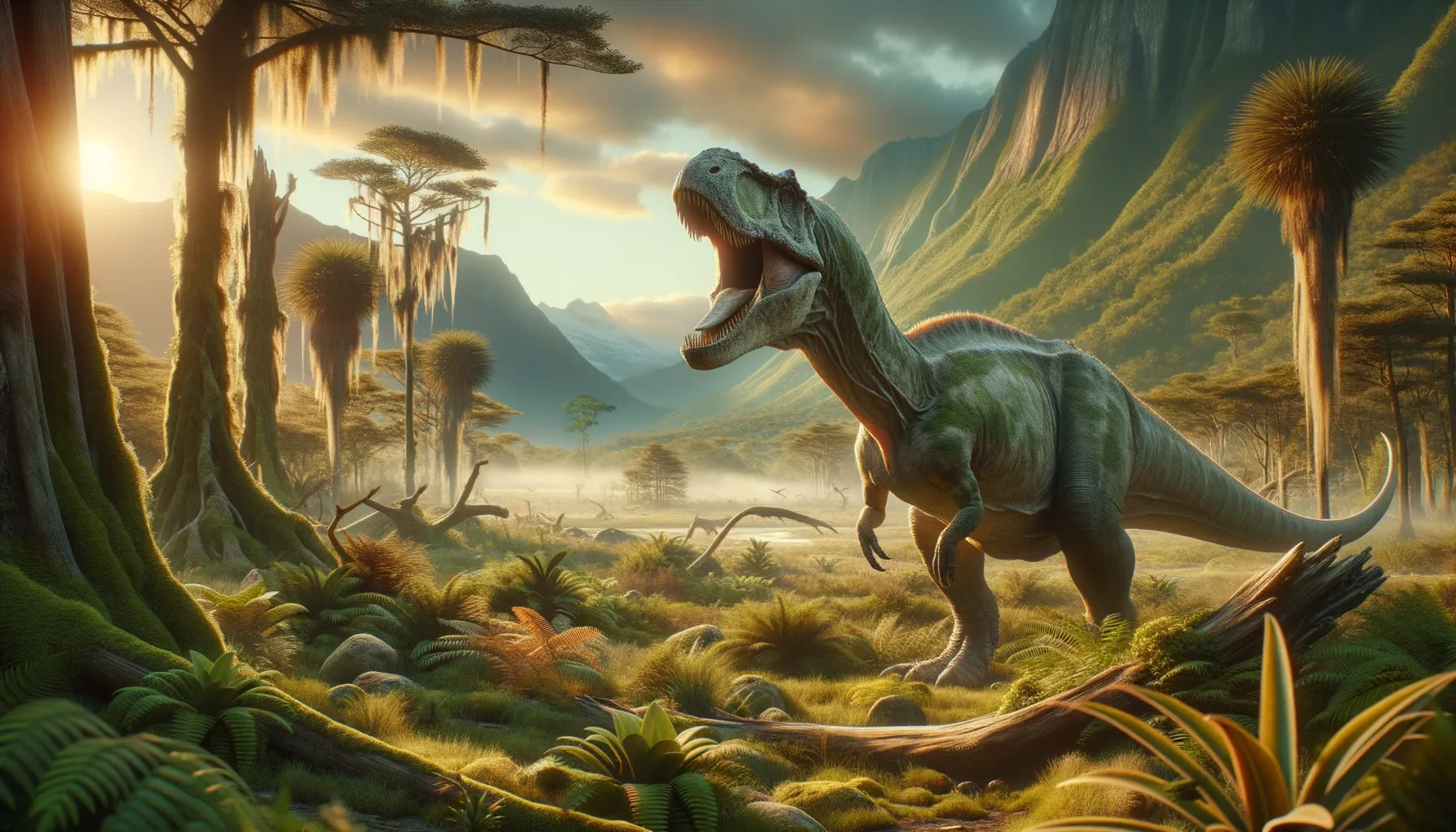
Patagosaurus
The gentle giant of the Jurassic jungles.
Period
Jurassic
Length
Around 18 meters in length.
Height
Approximately 8 meters tall.
Weight
Weighed around 7 to 9 tonnes.
Patagosaurus is a long-necked, herbivorous dinosaur that lived during the Middle Jurassic Period. It is known for its large size and long tail, which it possibly used for balance and defense. As a sauropod, Patagosaurus roamed regions that are now part of Argentina and was part of a diverse ecosystem with many other dinosaurs.
Diet
Patagosaurus was a herbivore, feeding primarily on plants and soft vegetation. Its long neck allowed it to reach high branches or sweep low for ferns and shrubs, making it an effective browser.
Hunting
As an herbivore, Patagosaurus did not hunt living prey. Instead, it spent much of its time foraging for food, likely using its massive body to reach a wide area without moving too much.
Environmental challenges
Patagosaurus faced environmental challenges such as competition for food with other herbivores in its ecosystem. Seasonal changes may have affected the availability of food sources, requiring these dinosaurs to migrate or adapt their diets. Predation by large theropods was also a constant threat, leading to the development of group behaviors for protection.
Speed
Likely moved at a slow pace due to its large size.
Lifespan
Estimated to live several decades.
First discovery
Discovered in Argentina in 1979.
Fun Facts
- Patagosaurus lived around 165 million years ago during the Middle Jurassic period.
- It was a long-necked herbivore, meaning it ate plants and foliage.
- This dinosaur's name means 'Patagonian lizard,' named after the region in Argentina where its fossils were discovered.
- Patagosaurus is believed to have grown up to 60 feet in length, about the size of a school bus.
- Unlike some other long-necked dinosaurs, Patagosaurus had a relatively short neck for its size.
- Its bones suggest it had a massive, sturdy body built for a slow, steady lifestyle grazing on leaves.
- Patagosaurus lived in a time when Patagonia was a lush, green environment, unlike the arid region it is today.
Growth and Development
Patagosaurus likely hatched from eggs and underwent a rapid growth phase to reach its gigantic adult size. Juveniles might have lived in safer areas to avoid predators until they were large enough to defend themselves. Their growth involved significant increases in both muscle and bone density to support their massive bodies.
Habitat
Patagosaurus inhabited lush, forested river valleys with an abundance of plant life. The Jurassic landscape was filled with ferns, conifers, and cycads, providing ample food. Seasonal floods may have created temporary wetlands, influencing their migratory patterns.
Interaction with other species
Patagosaurus likely coexisted with various other dinosaurs, including both smaller herbivores and large carnivores. Its massive size made it less vulnerable to attacks by predators, though juveniles and weaker individuals were likely preyed upon. Interactions with other herbivores might have involved competition for resources or, possibly, cooperative behaviors like herd formation.
Natural lifespan
Patagosaurus could naturally live for several decades.
Reproduction
Patagosaurus reproduced by laying eggs, likely in nests constructed in safe areas. These nests were possibly monitored by adults to protect the eggs from predators. Once hatched, juveniles would have relied on the group for protection and learned survival techniques from adults.
Social behaviour
Patagosaurus might have lived in social groups or herds, providing protection against predators through collective vigilance. These social structures could have facilitated communication and cooperation in locating food and water resources. Dominance hierarchies may have existed, particularly among males during mating seasons.
Fossil locations
Fossils of Patagosaurus have been predominantly found in the Chubut Province of Argentina. These discoveries have provided significant insights into the diversity of Jurassic sauropods in South America. The fossil evidence from this region contributes to understanding environmental conditions and dinosaur ecosystems of the period.
